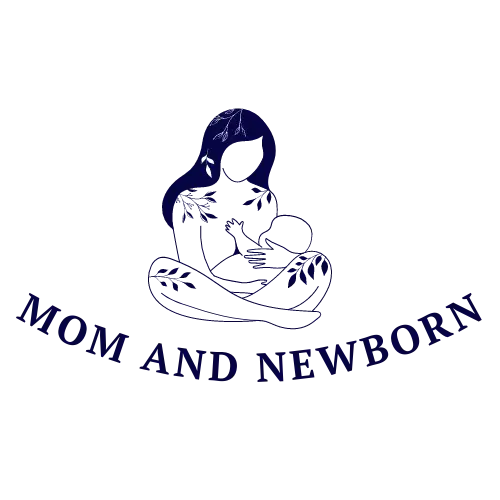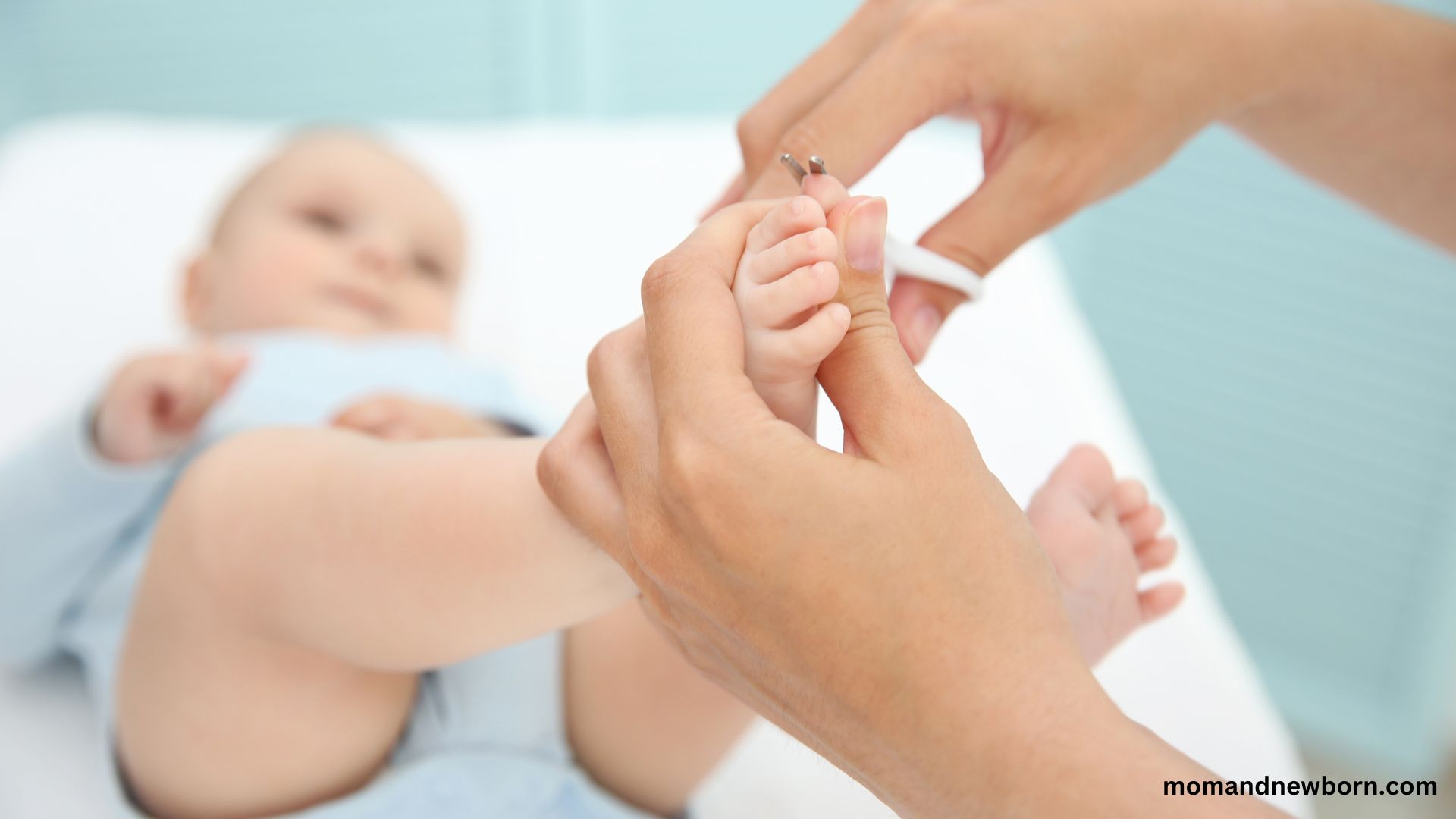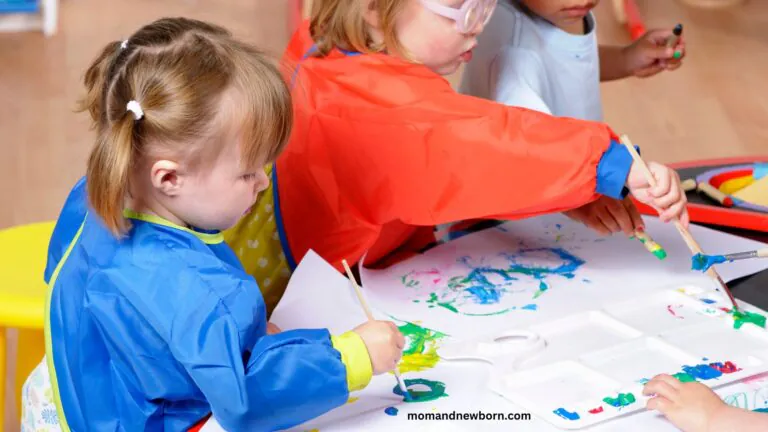Taking Care of Your Newborn’s Nails: Tips for Trimming and Cleaning
Keeping your baby’s nails trimmed and clean is essential to their overall health and hygiene. As a new parent, handling those tiny fingers and nails cannot be very comforting, but it’s an important task that needs to be done regularly.
From choosing the right tools to techniques for trimming and cleaning, there are several factors to consider regarding your baby’s nails. This article will explore everything you need to know about baby nails, including the reasons for trimming, the potential risks of not doing so, and tips for keeping your baby’s nails healthy and well-maintained.
Keep reading on momandnewborn.com to learn more about this important aspect of newborn care.
How fast do newborn nails grow?
Newborn nails typically grow quickly, with some parents reporting that they must trim their baby’s nails as often as once a week. On average, a baby’s nails will grow about 1 millimeter per week, although this can vary from baby to baby. Some babies may have nails that grow more slowly, while others may have nails that grow more quickly.
Parents need to keep their baby’s nails trimmed to prevent the baby from scratching themselves or others and to avoid dirt and bacteria from building up under the nails. To cut a baby’s nails, it’s recommended to use baby nail clippers or scissors and to do it when the baby is calm and relaxed, such as during a nap or after a bath when the nails are softer.
Should you trim newborn nails?
Newborns have very soft and pliable nails that grow quickly, and if they become too long, they may accidentally scratch their faces or other parts of their bodies. Trimming your baby’s nails can help prevent these accidental scratches and keep your baby more comfortable. (1)
When can I start cutting my newborn’s fingernails?
You can start cutting your newborn’s fingernails as soon as they are born. Newborns’ nails can grow quickly and become too long and sharp, which can cause them to scratch themselves or others accidentally. It’s essential to trim your baby’s nails to prevent this.
When can you start using nail clippers on a baby?
When trimming your baby’s nails, it’s essential to use a special pair of baby nail clippers or scissors that are designed to be safe for use on delicate newborn skin. Trimming the nails straight across is also essential to avoid causing ingrown nails or other complications. Some parents find it helpful to trim their baby’s nails while sleeping or after a bath, when their nails may be softer and easier to cut.
How do I cut my baby’s nails without crying?
Trimming newborn nails can be challenging because their nails are tiny and delicate, and it cannot be easy to see where the nail ends, and the skin begins. However, trimming your baby’s nails is essential to prevent them from accidentally scratching themselves or others.
Here are some tips for trimming your newborn’s nails safely and effectively:
- Use baby nail clippers or scissors that are specifically designed for newborns. These tools have small blades and are designed to be safe for use on delicate newborn skin.
- Choose when your baby is calm and relaxed, such as after a bath or nap.
- Use a soft light to help you see the nails. If you’re having trouble seeing the nails, you can also try gently pulling the fingertip pad away from the nail to expose the white part of the nail.
- Hold your baby’s hand firmly but gently, and use the clippers to trim the nails straight across. Avoid cutting the nails too short, which can cause pain and bleeding.
- If you accidentally cut your baby’s skin, apply gentle pressure with a clean cloth to stop bleeding. You can also use a sterile gauze pad or a baby-sized bandage to cover the cut.
Remember, if you’re uncomfortable trimming your baby’s nails or have any questions or concerns, you can always ask your pediatrician or a healthcare professional to show you how to do it safely and effectively.
Is it better to file nails wet or dry?
It’s generally better to file newborn nails when they are dry, as filing wet nails can increase the risk of splitting or tearing the nail. Wet nails are also softer and may be more challenging to shape correctly.
If you need to soften your baby’s nails before filing, gently soak their fingertips in warm water for a few minutes. This can make the nails easier to shape and sand.
When filing your baby’s nails, it’s essential to use a baby nail file designed for delicate newborn skin. You can point the nails in one direction, starting at the outside of the nail and moving toward the center. Avoid filing back and forth, as this can weaken the nail and cause it to split.
How do you clean under newborn nails?
You can use a soft, damp washcloth or a baby nail brush to clean under your newborn’s nails. Here are some steps to follow:
- Wash your hands thoroughly to prevent the spread of germs.
- Hold your baby’s hand and inspect its nails to see any dirt or debris underneath.
- Wet a soft washcloth or baby nail brush with warm water.
- Gently brush or wipe underneath your baby’s nails, careful not to scratch their delicate skin.
- Rinse the washcloth or brush in warm water and repeat until the nails are clean.
- Dry your baby’s hands and nails thoroughly.
It’s essential to clean your baby’s nails regularly to prevent dirt and bacteria buildup. However, be careful not to overdo it, as excessive cleaning can damage the delicate skin around the nails. If you notice any redness, swelling, or irritation around your baby’s nails, or if you have any concerns about their nail health, consult your pediatrician or a healthcare professional.
What is the difference between baby nail clippers and regular clippers?
There are several differences between baby nail clippers and regular clippers. Here are a few key ones:
- Size and shape: Baby nail clippers are typically smaller and more rounded than regular clippers, making them easier to use on tiny newborn fingers and toes.
- Safety features: Baby nail clippers often have additional safety features to prevent accidental cuts or injuries. For example, some baby nail clippers have a safety guard that helps to avoid over-cutting, while others have a curved blade that follows the natural curve of the nail.
- Material: Baby nail clippers are often made from softer, more flexible materials that are less likely to cause discomfort or injury to a newborn’s delicate skin. Some baby nail clippers are also made from non-toxic materials that are safe for babies to put in their mouths.
- Ease of use: Baby nail clippers are designed to be easy, even for parents new to nail clipping. They may have ergonomic handles, non-slip grips, or other features that make them easier to hold and control.
Overall, the main difference between baby nail clippers and regular clippers is that baby nail clippers are designed specifically for newborns and infants, and they have features that help make the nail clipping process safer, easier, and more comfortable for both parents and babies.
What to do if you accidentally cut your baby’s finger?
If you accidentally cut your baby’s finger while trimming their nails, here are some steps you can take:
- Stay calm: It’s natural to feel upset or guilty if you accidentally hurt your baby, but it’s important to stay calm and avoid panicking.
- Apply gentle pressure: If the cut is bleeding, apply gentle pressure to the area with a clean, dry cloth or gauze to stop the bleeding.
- Clean the cut: Once the bleeding has stopped, use a clean cloth or gauze to clean the cut with water and mild soap gently.
- Apply an antibiotic ointment: After cleaning the cut, apply a small amount of antibiotic lotion to help prevent infection. Cover the cut with a clean, sterile bandage to protect it and keep it clean.
- Monitor the cut: Keep an eye on it over the next few days to ensure it’s healing correctly. If you notice any signs of infection, such as redness, swelling, or pus, contact your pediatrician.
It’s always best to take preventative measures to avoid cutting your baby’s finger in the first place, such as using proper baby nail clippers, trimming nails when your baby is calm and still, and avoiding accidental slips. But if an accident does occur, following these steps can help to keep your baby safe and comfortable.
You may also be interested:
- A Guide To Bathing Your Baby Safely And Comfortably
- Top 6 Bath Toys for Toddlers: Fun and Safe Options
- Suds Up Safely: Our Top Picks for Baby Bath Sponges!
References: Chinazzo M, Lorette G, Baran R, Finon A, Saliba É, Maruani A. Nail features in healthy term newborns: a single-centre observational study of 52 cases. J Eur Acad Dermatol Venereol. 2017 Feb;31(2):371-375. doi: 10.1111/jdv.13978. Epub 2016 Oct 20. PMID: 27660117.
What happens if I don’t cut my baby’s nails?
If you don’t cut your baby’s nails, they can become too long and sharp, which can scratch their delicate skin and cause injury. Long nails can also be a risk factor for infection, as dirt and bacteria can get trapped under the nails.
What do vitamin deficiency nails look like?
A vitamin deficiency can cause changes to the appearance of nails. For example, a lack of vitamin C can cause nails to become brittle, while a lack of vitamin B12 can cause them to be pale and ridged. A doctor can perform a blood test to check for vitamin deficiencies.
Why does my baby have ridges in his nails?
Ridges in a baby’s nails are usually nothing to worry about and are common. Various factors, including average growth and development, nutritional deficiencies, or minor injuries, can cause them. Talk to your pediatrician if you’re concerned about your baby’s nail ridges.
Do babies need special nail clippers?
While you can technically use regular nail clippers to trim a baby’s nails, it’s generally recommended to use special baby nail clippers, as they are designed to be smaller and more precise. Baby nail clippers are also less likely to cut your baby’s delicate skin accidentally. Some parents prefer to use baby nail scissors or a soft file, depending on their preference and their baby’s comfort level.








